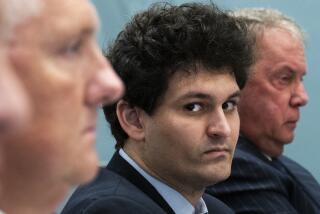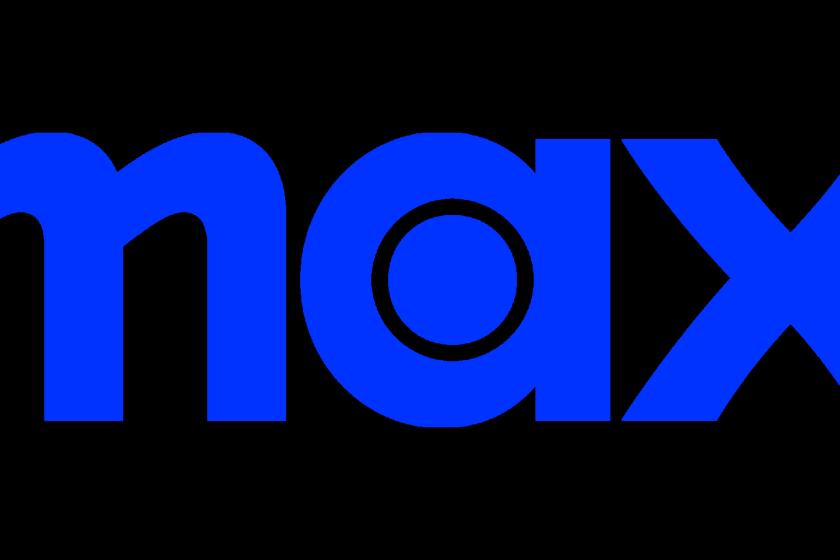The Rare-Coin Business Feels a New Tarnish : Investing: Two Newport Beach firms--a dealer and a value-rating service--are among the latest accused of abuses. The government may regulate the industry if things don’t change.
- Share via
Jimmy Hayes was in New Orleans looking for buried treasure.
The year was 1958 and he was 13. Up and down Royal Street he traveled, stopping at store after store looking for something like a doubloon. Deep inside an antique shop, he discovered a piece that would launch a lifelong coin hobby--an 1889 gold dollar that cost $21.
For the record:
12:00 a.m. Sept. 23, 1990 For the Record
Los Angeles Times Sunday September 23, 1990 Home Edition Business Part D Page 3 Column 2 Financial Desk 2 inches; 70 words Type of Material: Correction
Certified Rare Coin--In a Sept. 2 article, the date when the Federal Trade Commission filed a complaint charging Certified Rare Coin Galleries with misrepresenting the value and investment potential of its coins was incorrectly reported. The complaint was filed in June, 1989. The company settled the charges, without admitting any wrongdoing, by agreeing to a permanent injunction and the payment of $400,000 in redress to consumers. The settlement order was filed in federal court on Aug. 22.
Now a member of Congress, Rep. Hayes (D-La.) tells this story as a remnant of a bygone era when coins only interested kids and small-time collectors.
Today, the rare-coin industry has outgrown its penny-ante status and become big business. Electronic trading, nationwide appraisal services and Wall Street limited partnerships have made the corner coin dealer something of a relic.
With the industry’s growth has come big problems. Fraud, long a problem in the largely unregulated rare-coin business, recently reared its head in a grand way.
The Federal Trade Commission last month filed a complaint against Newport Beach-based Hannes Tulving Rare Coin Investments, one of the nation’s largest coin dealers, saying it bilked thousands of investors of as much as $40 million. The company denied the charges but agreed to be placed in receivership. And this week, the agency charged that a Florida coin dealer, Certified Rare Coin Galleries, misled investors about the investment potential of coins. It ordered the firm to return $400,000 to customers.
While the allegations of fraud are worrisome, an even bigger concern is an FTC charge that a major grading service has made false and misleading claims to investors. Grading had been heralded as a standardized way of rating coins that could eliminate most consumer rip-offs.
The FTC last month filed a complaint against Newport Beach-based Professional Coin Grading Service, one of only three grading services in the nation, saying that the firm misled investors in advertising and promotional materials.
FTC consumer protection director Barry Cutler called the consent decree “the most significant and far-reaching complaint in the coin industry to date.”
The impact is even being felt on Wall Street, where some major brokerages have gone into rare coins in a big way. Merrill Lynch and Kidder, Peabody & Co. have formed multimillion-dollar limited partnerships that invest in rare coins, and Salomon Brothers Inc. maintains an index of rare coins to gauge the rise and fall of those investments.
Some analysts believe that the recent government crackdown on rare-coin dealers and graders could chill investment in an industry whose reputation has again been sullied.
As a result, the rare-coin fraternity finds itself at a fork in the road. The industry is debating whether to provide better self-regulation or face greater government oversight. The answer could determine whether the rare-coin industry rises to be an equal of the stock and bond business or whether it will be relegated to a sideshow where caveat emptor is the creed.
For decades, the rare coin business was small, with a somewhat sleazy reputation. Before the 1980s, serious investors rarely considered old coins as a way to finance a college education, a new house or retirement.
Those who did often paid dearly. There was the Boston man, for instance, who invested a $500,000 settlement from a medical malpractice lawsuit filed on behalf of his brain-damaged child. The coins he purchased turned out to be worth only $5,000.
“For many years, the coin industry was filled with flagrant abuses,” admitted New York rare-coin dealer and author Scott Travers. “We don’t have abuses like that today.”
The industry has come a long way in cleaning house in recent years, say industry officials and government regulators. But some, including FTC officials, wince at dealer claims that rare coins are as safe an investment as stocks and bonds and perhaps more profitable.
“There is less fraud but there is still a lot,” said Phoebe Morse, the FTC’s New England director. “We still get letters every week from people who bought coins and then find out they were only worth 15% of what they paid for them.”
The public’s fascination with rare-coin investing is partly fed by market indices which show gains for rare coins of as much as 50% in a year. But these returns are based on a very limited number of coins, many of them very rare and costly. The widely quoted Salomon Bros. U.S. Coin index ranks numismatics as the fourth-best performing investment in the last year, but that figure is based on only 20 coins.
The biggest factor in the rare-coin industry’s growth and increased legitimacy in recent years is grading--a measure of the physical condition of a coin on a scale from 1 to 70. Those coins considered investment-grade hover around MS-65 (MS means Mint State).
Before there were nationwide grading services, buyers were pretty much forced to rely on grades assigned by the same dealers selling them the coins. This was a sure-fire system for swindling because a dealer could mark up a coin several grades and the customer wouldn’t be the wiser.
Professional Coin Grading Service assigns a grade to a coin after it’s been reviewed by at least three experts. Numismatic Guaranty Corp. of America and the American Numismatic Assn. Certification Service provide similar services. Each company certifies its coins, slabbing them into a plastic case with a serial number and other identifying data.
Begun just four years ago, the grading system is a widely accepted standard. Some buyers feel so comfortable with the ratings that, based on them, they purchase coins sight-unseen on two newly created electronic exchanges similar to the New York and American stock exchanges.
Kidder Peabody and Merrill Lynch have each marketed rare-coin limited partnerships because of the grading. “Certified grading for U.S. coins has been a tremendous improvement,” said a high-ranking Merrill Lynch executive. “It makes the brokerage firms more comfortable.”
PCGS says in a brochure that its service heralds “a new era of safety and reliability for rare-coin collectors and investors.”
The FTC, however, believes grading isn’t what it’s cracked up to be. The process is still very subjective, and last month the agency charged that “PCGS has not provided objective or consistent grading . . . and PCGS does not in all cases observe its ‘strict anti-self-interest policy.’ ”
PCGS signed a consent decree to settle the charges without admitting any liability.
Grading is critical because the difference between two grades can mean loss of tens of thousands of dollars. For instance, an 1884-S Morgan Silver Dollar with a grade of MS-64 was trading last week on the Certified Coin Exchange--a Houston electronic exchange--for $33,500, while the same coin with an MS-65 grade was trading for $150,000.
Because there is big money in getting a good grade, some dealers resubmit coins to expert panels in an effort to increase a coin’s grade.
“We know people are making hundreds of thousands of dollars by resubmitting coins for grading to PCGS,” said Morse. “We have examples where one coin was resubmitted four, five or six times in a six-week period and was given four different grades ranging from 62 to 66.”
Those pieces submitted time and again are known in the industry as shot coins.
“What’s a shot coin?” Morse asked. “It’s a coin that someone with good eyes thinks has a shot of getting a higher grade the next time it’s submitted.”
The use of plastic slabs, in which a rare coin is encased after grading, was supposed to have been designed to stop this. PCGS says “the graded coin is sonically sealed in a tamper-proof plastic holder,” but the FTC’s Morse says “all you do is take a hammer to it.”
PCGS acknowledges that some dealers continually try to upgrade coins but says most coins receive the same grade. The company has graded some $2.5 billion worth of coins in its four-year history.
Grading has helped avert cases like the one in Boston where someone was sold worthless coins for hundreds of thousands of dollars. But grading is just a ballpark estimate--it’s still not a precise science.
The FTC action against PCGS could undermine the Wall Street partnerships somewhat because they have relied on grading companies to persuade investors that investing in rare coins is safe. Merrill Lynch’s NFA World Coin Fund has already bought some PCGS graded coins.
The fund--which is in the process of raising $50 million--said in its prospectus that “the establishment of grading services, market price lists and market indices have added stability, legitimacy and liquidity to the United States coin investing market.”
NFA officials were scheduled to speak at the American Numismatic Assn.’s convention two weeks ago in Seattle but withdrew at the last minute. They refused comment for this story, citing a Securities and Exchange Commission regulation barring them from promoting a fund during its offering.
The FTC has expressed concern over brokerages’ entry into rare-coin trading.
“Wall Street brokerages can lull into a false sense of confidence certain consumers who would not otherwise pay attention to the telephone calls of an unknown telemarketer,” Cutler said in a speech at the ANA gathering. “The ingredients for major league trouble are all present.”
“Wall Street funds created the appearance of continuity and liquidity,” said Travers, the New York dealer. “It’s a perception, not a reality.”
There is some concern too that Wall Street’s presence on the industry’s two major computerized exchanges--Certified Coin Exchange and Atlanta-based American Numismatic Exchange--is causing tremendous volatility because they are buying and selling such large quantities.
For instance, Kidder Peabody’s $40-million American Rare Coin Fund is cited as one of a few major players whose decision to stop trading in late March caused a mini-crash in coin prices of around 15%. Some coins fell in value by as much as 50%.
The FTC’s Cutler says some tough issues are going to have to be decided about computerized trading of coins.
“How does one control the temptation and opportunity to manipulate auctions and selling practices when a $50-million collection must be sold in relatively short order?” Cutler said in his ANA address. “Do we really know what will happen when a Wall Street brokerage tries to sell off a $50-million portfolio in a relatively short time frame? I confess to having more questions than answers.”
What’s more, the FTC is not entrusted with the responsibility for finding solutions. The action it has taken was done under truth-in-advertising laws. Unless a company violates advertising laws by making false or misleading claims, the FTC can’t touch it.
So the coin business is literally unregulated, though nearly everyone says that won’t be true much longer.
“By the time you get Wall Street brokerages selling $50-million limited partnerships, you definitely need more regulation than there is now,” Hayes said.
Some in the industry agree and are trying to form a self-regulatory organization, perhaps modeled on the lines of the National Assn. of Securities Dealers, which oversees trading of over-the-counter stocks.
The fear among industry representatives is that if rare-coin dealers and brokers don’t police themselves better, the federal government will do it for them.
Hayes, the Congressman who collected coins as a kid, could not agree more.
“They will simply not be a non-regulated industry,” he said.
Times librarian Mary Kay Lewis contributed to the research on this article.
RUN-UP IN THE RARE COIN MARKET Coin World Magazine uses several indices to track the ups and downs of the rare coin market. Top-quality investment-grade coins are labeled MS-63 and MS-65. The indices below are based on the values of approximately 2,000 of those coins. When the indices were first created in December, 1983, they were set at 100.
RECENT VOLATILITY POSES RISKS FOR INVESTORS
The value of rare coins can swing dramatically over short periods of time. The coins shown below, commonly purchased by investors, gained or lost more than 10% of their value during July. The values listed are not for individual coins but are an index of similar specimens, all of the same grade but with varying dates and mint marks, as compiled by Coin World.
Walking Liberty half dollar
Grade MS-65
Index $190.38
July, 1990 (Pct. Chg)-15.67
Winged Liberty Head dime
Grade MS-65
Index $374.47
July, 1990 (Pct. Chg)+10.35
Morgan dollar
Grade MS-65
Index $384.98
July, 1990 (Pct. Chg)-14.24
Source: Coin World (copyright 1990 by Amos Press Inc,) and reprinted by permission
More to Read
Inside the business of entertainment
The Wide Shot brings you news, analysis and insights on everything from streaming wars to production — and what it all means for the future.
You may occasionally receive promotional content from the Los Angeles Times.










